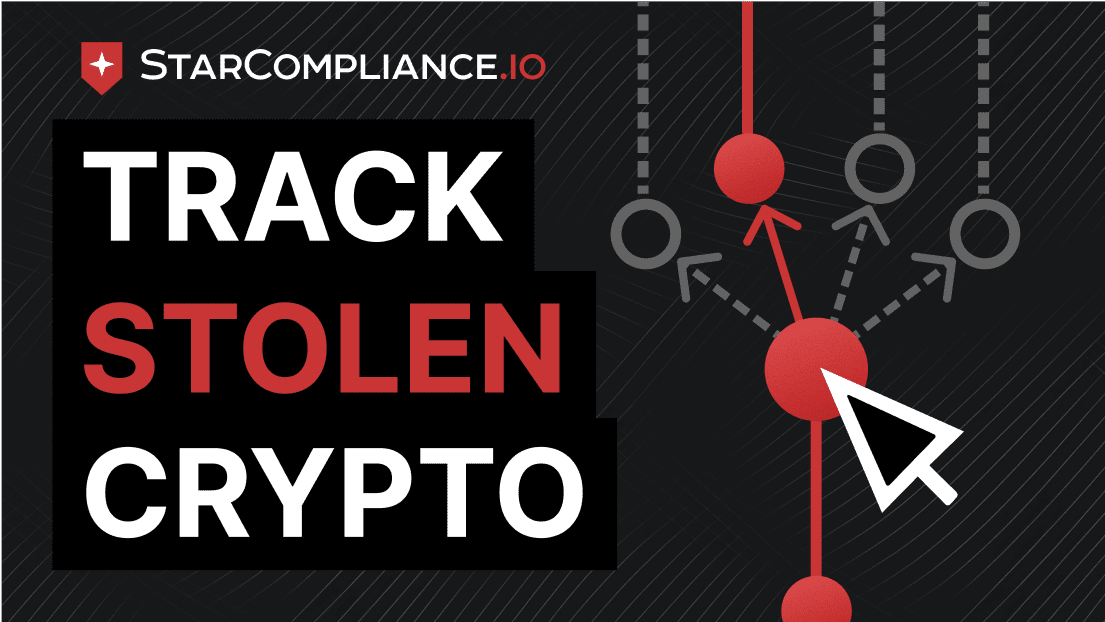
How to track stolen cryptocurrency?
2023-05-09
Cryptocurrency theft happens everywhere, regardless of the type of network or token. Sometimes it is holes in smart contracts, and sometimes even entire fake DeFi. Nevertheless, there is a solution – StarCompliance.
Almost all cryptocurrencies, except for anonymous ones, have an open blockchain, which means you can view absolutely any transactions in it.
These transactions are shown by block observers, such as:
- Tronscan.org
- Bscscan.com
- Etherscan.io
Or universal ones, like blockchair.com, which can review multiple blockchains in one place.
Regardless of where the theft occurred, on an exchange wallet or on your personal wallet, cold or hot, absolutely in any case you will have an outgoing transaction within which there is a hash. Stolen funds can be tracked with the hash.
Hash
Hash is the result of processing an array of data with a hash function, converting the original data of any size to a string of fixed length.
With the hash you can find out all the details of the transaction:
- The time and amount of the transaction;
- The address of the recipient;
- What the fee was for it;
- What kind of token was sent.
Knowing this data is not always possible to find the money yourself, a lot of transactions, addresses, exchangers, mixers and exchanger wallets can prevent the identification of the final recipient, as well as to establish his identity in order to punish.
If you are not confident in your abilities to track stolen cryptocurrency by yourself due to the above mentioned reasons and you want professional help – contact us. We can mark funds as stolen to notify other exchanges about the danger, transfer this data to the largest tracking companies such as Chainalysis, Crystal Blockchain Analytics and they will already be in the databases of stolen cryptocurrencies.
StarCompliance will gather evidence to track down the thief and recover the cryptocurrency through methods such as:
- OSINT;
- Tracking software;
- Legal operations;
- Regulatory engagement.
Contact the exchange if the theft occurred on it or its wallets were involved in illegal activity.
How is the owner of the address disclosed?
This part is done after stolen cryptocurrencies are discovered, since most KYC exchanges and trading platforms require serious compliance with the rules as to why they have to work with the ID and personal data of their clients. There is a possibility that the thief also used these services and left his mark there. Our job here is to provide legal evidence and disclose personal data from the companies, for further legal action.
Once you have the necessary data, you have the opportunity to apply for your money back through the courts. These days, most courts allow lawyers to do their work remotely. We represent the victim in local courts after the tracing and disclosure is complete. Cryptocriminals don’t often show up in court, which makes the case easier for the victim.
Here’s an example of a crypto investigation in a high-profile case. On May 7, 2021, Colonial Pipeline received a ransom note and all of its pipelines were shut down for five days. It seems like no big deal, but we’re talking about 8,000 miles of oil pipelines that carry 3 million barrels of fuel between Texas and New York every day.
One hour of downtime costs thousands of dollars. The attackers demanded to pay a ransom in BTC and Colonial Pipelines agreed. The FBI then launched a cryptocurrency investigation to trace the ransom payment. Cryptocurrency investigators determined that the criminals sent the funds to an exchange in the United States. The FBI then seized and recovered the funds.
In conclusion, cryptocurrency theft can be a very stressful and difficult event, but it’s important to remember that we have proven ways to track stolen cryptocurrency and return it to the customer. Don’t forget to take precautions to protect your cryptocurrency from future threats